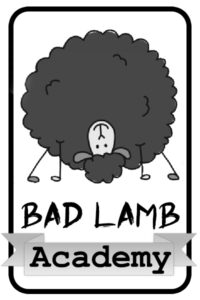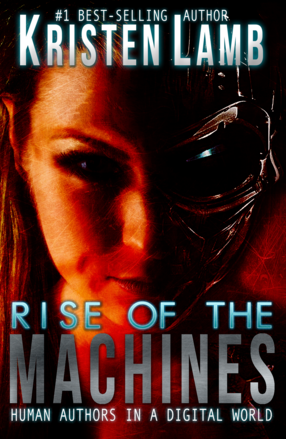Welcome to Part III of my Structure Series. If you happened to read Friday’s blog, then you know that it is okay not to know everything. I still don’t. I do want to take a quick segue here, though. I think a lot of people might have seen the title to Friday’s blog The Big Lie—No More Drinking the Publishing Kool-Aid and thought I was going to tear down the establishments of traditional publishing. I will grant, publishing is changing and that’s a topic for another day. There are all kinds of other ways to get published, but here is the deal. If you want to self-publish or indie publish, I would assume most of you want to be successfully published, regardless the format or distributor. To be considered “successfully published” we have to sell a lot of books. To sell a lot of books, we must connect with readers. That is what this series is about. Structure is how readers connect to stories. The stronger the structure, the better the story. I highly recommend that you read Part I and Part II of this series, if you haven’t already in that each lesson builds upon the previous lesson.
Let’s get started.
Conflict is the core ingredient to fiction, even literary fiction. Yes, we can break rules, but we must understand them first. Conflict in any novel can have many faces and often you will hear this referred to as the antagonist. I am not going to use that term in the traditional way because I think it can be confusing. Every scene in your book should have an antagonist, but I am getting ahead of myself. Today we are going to start with the Big Boss Troublemaker. No BBT and you have no story. Your opposition is the most important ingredient for a great story readers will love.
The Big Boss Troublemaker is whoever or whatever causes the hero’s world to turn upside down. This is also who or what must be present at the Big Boss Battle. In Star Wars, the BBT was the Emperor. It is his agenda that causes the inciting incident and it is he who must be faced in the final battle or the movie ain’t over.
In the beginning of The Chronicles of Riddick, Riddick is running from bounty hunters. Due to the nature of the story, it begins right in the action. Who is the antagonist? In that scene it is the bounty hunter.
Riddick’s goal—remain free
Bounty Hunter’s goal—capture wanted criminal Riddick
Their goals are in conflict. The bounty hunter is the antagonist in the scene, but he isn’t the Big Boss Troublemaker.
Lord Marshal actually was the party responsible for bounty on Riddick’s head (via the Elementals). The Lord Marshal was also responsible for the extinction of Riddick’s home world in an effort to kill the Furyan male who was prophesied to bring his end. Who is fighting in the Big Boss Battle?
Riddick and the BBT, Lord Marshal.
The stronger your BBT, the better. In the beginning, your protagonist should be weak. If pitted against the BBT, your protag would be toast…or actually more like jelly that you smear across the toast.
The Big Boss Troublemaker doesn’t have to be a person. It can be a storm, like in The Perfect Storm or disease, like in Steel Magnolias.
Remember high school literature?
Man against man.
Man against nature.
Man against himself.
The first one is pretty simple, but the next two? This is where things get tricky when the BBT is not corporeal. Humans don’t do so great with existentialism. Thus, your story likely will lend itself more to a character battle. What is it about your protagonist that will change when pitted against nature or the worst parts of himself?
In The Perfect Storm, was the storm really the BBT? Or was it merely a catalyst that brought forth the real BBT…pride. In the end, the men lose. They believe that their skill will be able to triumph over the storm, and they are wrong, which is probably why I really didn’t care for the book or the movie, but that is just me.
In Steel Magnolias the BBT is diabetes, manifested in the proxy of the daughter Shelby. Shelby’s decision to get pregnant despite having diabetes (Inciting Incident) is what changes the mother M’Lynn forever. What must change about M’Lynn? She is a control freak who must learn to embrace life for all its ugliness. She cannot beat death, or can she?
We see M’Lynn in the beginning of the movie fluttering over her daughter’s wedding, controlling everything and tending to the flowers and the broken glasses (symbol). When Shelby dies, M’Lynn is once again trying to control everything, tending the flowers and the broken things—her husband and sons. She falls apart after the funeral. M’Lynn has let go of control and the arc is complete. In the Big Boss Battle, the BBT is defeated. How? Shelby is dead. The BBT is defeated in that there is resurrection. Diabetes and death have been defeated. Shelby lives on in the son she left behind, a grandson that M’Lynn would never have had if she’d gotten her way in the beginning and been permitted to control Shelby’s life. (Note that this entire movie is bookended by Easter).
Your BBT is the entire reason for your story. No Emperor and there is no Star Wars. No Lord Marshal and Riddick would be off doing what Riddick likes to do when he isn’t killing things. No storm and no Perfect Storm. If Shelby didn’t have diabetes, then there would be no challenge and, thus no story.
So, once you have your Big Boss Troublemaker, you will have emissaries of the BBT. Depending on the type of story, usually the BBT will have a chain of command. Some will be actual characters. The Emperor had Darth and Darth had Storm Troopers that he could send out to cause massive inconvenience to others. They all trace back to the original BBT, though. The BBT is the core of the story and must be defeated by the end of the story. Everything leads to destroying the BBT.
So we have Big Boss Troublemaker.
We have the BBT’s emissaries.
Ah, but EVERY scene has an antagonist. What is the antagonist? The antagonist is whoever is standing in the way of your protagonist achieving her goal.
In Romancing the Stone who is the Big Boss Troublemaker? The BBT is the crooked inspector. Who are the emissaries of the inspector? The two thieving brothers who have kidnapped romance author Joan Wilder’s sister (the crooked inspector is using them as unwitting pawns to get the map and get the jewel). What is the goal? The jewel. What is the final battle? When the inspector and one of the thieves are fed to the alligators in an act of poetic justice, and the younger brother is taken to jail.
Who is the antagonist? That changes, but Jack (the love interest) often serves the antagonist’s role. Joan wants to just give the map to the thieves in exchange for her sister. Jack wants to use the map to find the jewel.
Some Pretty Hard and Fast BBT Rules—Break these Rules at Your Own Risk
Rule #1–BBT (or a proxy of the BBT) MUST be introduced in Act I. No leading us on for 50 pages before we get an introduction. BBT is responsible for Inciting Incident.
Rule #2–The love interest CANNOT be the BBT. He or she can wear the antagonist’s hat, but he or she CANNOT be the BBT. Why? Because the BBT must be defeated in the Big Boss Battle, and utter defeat isn’t exactly grounds for a lasting relationship.
Pizza has rules and so does romance. I am sure there are exceptions, but it defies the code of great love stories and often leads to a very unsatisfactory ending. Audiences have tastes that we are wise to appreciate. If we want to write romance, then there is a fairly strict code that guy and gal end up together in the end. It’s the whole point of reading romance, so we can believe love conquers all. If your romance mimics life too much, then there is no escape and that defeats the entire purpose of reading romance.
Rule #3–BBT MUST be defeated in your book. Period.
There has to be a Big Boss Battle in your story or the story problem is not fully resolved. A lot of new writers are “writing a series.” And, oh, but Such-and-Such dies in book 12 of my series. No. Sorry. Try again.
In a series, the protagonist in every book MUST DEFEAT the BBT responsible for the story problem. We must treat that book as a stand-alone. If we were hit by an ice cream truck and never wrote another, the problem of our last book would be resolved.
We will talk more about this on another blog, because series are a whole other ballgame. I will give you a nugget to hold you over, though. Think back to what we talked about earlier. BBTs have emissaries sent to do their evil deeds. Treat each emissary as your BBT in each book (only you don’t tell the reader). But at the beginning of the next book, the reader realizes that the BBT defeated in the previous book, really was only a BBT emissary for an even bigger BBT.
(Book I) BBT–> (Book II) BIGGER BBT–> (Book III) EVEN BIGGER BBT—> (Book IV) HOLY MOLY! AN EVEN BIGGER BBT!!!!
Okay, well that’s enough for today. Need to stop before your brains all explode and then you have to clean up your keyboard. Structure is tough, and hopefully this series is breaking it down in to bite-size, manageable pieces.
I want to hear your comments. Who are your favorite BBTs of all time? Do you still have questions or other topics you would like me to explore? Do you have any books or techniques you would like to share?
Exercise I–Watch your favorite movies. Who was the BBT? Who were the emissaries? How was the BBT’s agenda introduced?
Exercise II–Recall your favorite books. Again. Who was the BBT? Who were the emissaries of the BBT? How was the BBT’s agenda introduced?
Exercise III–For the literary folk. Who was the protagonist? What internal flaw was the protag forced to confront? How was it manifested (BBT)? Was the character flaw defeated? How was the BBT defeated?
In Steel Magnolias the character flaw (need to control) is defeated when Shelby dies. M’Lynn lets go of control. Diabetes/Death (the BBT), however, is defeated with life. Shelby will live on through her son.
Yeah, it’s a brain-bender but great exercise for our story-telling muscles.
Now the shameless self-promo. We Are Not Alone–The Writer’s Guide to Social Media is designed to be fun and effective. I am here to change your habits, not your personality. My method will help you grow your network in a way that will translate into sales. And the coolest part? My approach leaves time to write more books. Build a platform guaranteed to impress an agent. How do I know this? My book is recommended by agents.









14 comments
9 pings
Skip to comment form
This is the second time today I’ve been caught off guard by having my thoughts echoed at me from another.
I love this series you’re doing, and am actually writing a very similar series on my game design blog explaining using narrative tools to draw players into a game.
I do have a question, though, just because I think I’ve got the right idea, but it’s tough to tell if my concept is doing this well. My WIP is about a futuristic race league (I keep comparing it to Speed Racer for people.) and the character I imagine as the BBT is the CEO of the league. He’s pulling strings for various characters throughout the plot and generally making the protagonist’s life harder, though rarely through direct interaction.
A key turning point for the character is going to be when he not only figures out that much of the league is ‘fixed’ but that it’s the CEO at fault and manages to win in spite of the CEO’s actions, and while the CEO won’t be ‘defeated’ by any outward measure, the main character will see his position as a victory over the antagonist. Is this an appropriate form of antagonism, or should I focus the primary antagonism on another character?
Author
Sounds solid, but the CEO needs to be present for his final defeat. In movies like this, they often do a jump cut to the BBT railing against his demise. This is akin to a leader of a country suffering defeat. His generals are the ones on the battlefield, but in the end, the leader must surrender. That is the best I can do with what I know about your story, and I hope it helped. Thanks for the comment and I am really happy you are enjoying the series. I am having fun writing it :D.
Excellent post, Kristin. Best BBT? There are so many. One that stands out is Nina from 24:Season 1, and Voldemort of HP. In fact, I think Rowlings success lies in the fact that she didn’t shirk on her BBT. In a quieter world, Lucy Steele from Sense and Sensibility always made me see cross-eyed.
Speaking as an editor, especially–BRAVA! You’re right. Brilliant post! 🙂
Great assessment of antagonists!
What are your thoughts on stories that have internal AND external conflict/antagonists? Does the rule of introducing them in Act One apply to both? How do you think having both “man against himself” AND “man against man” antagonists changes the structure of the story?
Author
Yes, they are both introduced in Act I. Usually it is the character flaw that would keep your protagonist from winning if pitted up against the BBT in the beginning. It is through the series of events that the protagonist not only grows (collects allies, tec.) but he or she often grows emotionally. That is why the mentor character is so commonly used. In the beginning of Top Gun, Maverick loses to Ice Man. Why? Because the same dare devil nature that gets him into the Top Gun program also makes him vulnerable to Ice Man who relies on a team. Maverick even goes through losing Goose, all to shape him into a fighter pilot who looked after his team first and his personal glory last. It is by working as a team that Maverick triumphs agains the Russian Migs at the end.
What do you think of the heroine giving up control? I mean she is “stubborn” to begin with and would not let anyone get in her way but finally, she gave up her control and got the hero because she gave up control?
Author
Then they should come together and actively defeat your BBT. “Giving up control” is a common character arc, so you should be good.
Favourite BBTS: Lord of the Rings. 1st book BBT – the orcs (sent by:), 2nd book BBT – Saruman (working for:), Third Book and FINAL BIGGEST BBT -Sauron. And the secondary BBTs running through all three, the Nazgul, are working for BBT #3. Perfect
Author
Exactly! Very well said.
So, does it count as ‘defeating’ the BBT if they were still around afterwards? Only in something I wrote a little while back, my hero died (it was very sad) and the bad guy sort of had a crisis and ended up almost killing himself but didn’t and basically just stopped being evil (and doesn’t that sound cringy when I say it aloud? See, there’s a reason I don’t do this kinda thing often).
Well for me the comic book route works, where the heroes have a rouges gallery to battle.
Mind you there are problems here as it could become a villain of the week format and that gets tacky sometimes…
But its worked wonderfully for Batman the animated series so theoretically it can work for a novel series
Hey Kristen, thanks for this amazing series, which I’m just catching up on. Have you written the blog entry about series and escalating BBTs?
I’m so glad you put in that last section because I’m working through your advice as I read, came to the section about the BBT and went ‘bugger, my book 1 BBT is a pawn of my book 2-5 BBT and he’s a pawn of my Book 6-whatever ‘whole! world! in! danger!’ BBT.
I’ve named him for you: the UBBT which, in faithful Joss Whedon style = UBER BBT.
Reblogged this on Gwendalyn Cope and commented:
My story needs a good “antagonist”, you say? Bleh. I need a Big Bad Troublemaker in my story? Awesome! NOW you’re talking.
[…] Editor Kristin Lamb wrote a terrific three-part blog series on structure recently. The entries are long but invaluable reading. Part one; part two; part three. […]
[…] Structure Part III–Introducing the Opposition from Kristen Lamb’s Blog (Awesome read on crafting your Big Bad Troublemakers, as she calls it! I also suggest reading Part I and II as well!) […]
[…] Great post about structuring your novel. […]
[…] to publish my books. Editor and Social Media Marketing Maven Kristen Lamb is publishing a great series on novel structure, cutting years of the “struggling” off of my “struggling author” […]
[…] a micro-scale. Part II explored the big picture and offered an overview of common plot problems. Part III introduced the most critical element to any novel, the BBT. Each of these blogs builds upon the […]
[…] from a flawed structure. Week three we discussed the single most important component to plot, the Big Boss Troublemaker, and last week I gave you a tested method to make sure your core idea was solid enough to be the […]
[…] Introducing the Opposition: your antagonist should be introduced as close to the beginning as possible, the first chapter being the best place, and must seem unstoppable. […]
[…] recently. You’ll want to catch all of them and start at the beginning: Part 1, Part 2, Part 3, Part 4, Part 5, Part 6, Part 7, Part […]
[…] character that largely impacts Toby’s decisions is the Big Boss Troublemaker, as Kristen Lamb calls the antagonist. This character appears only in certain scenes and […]